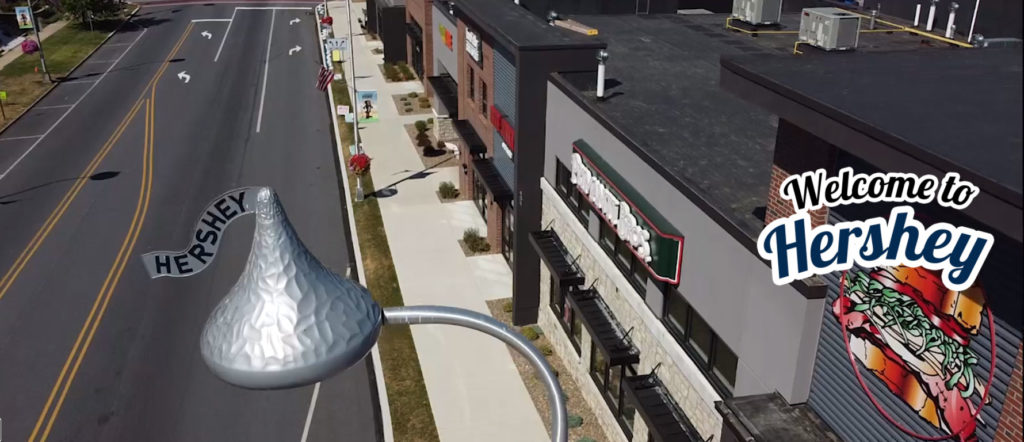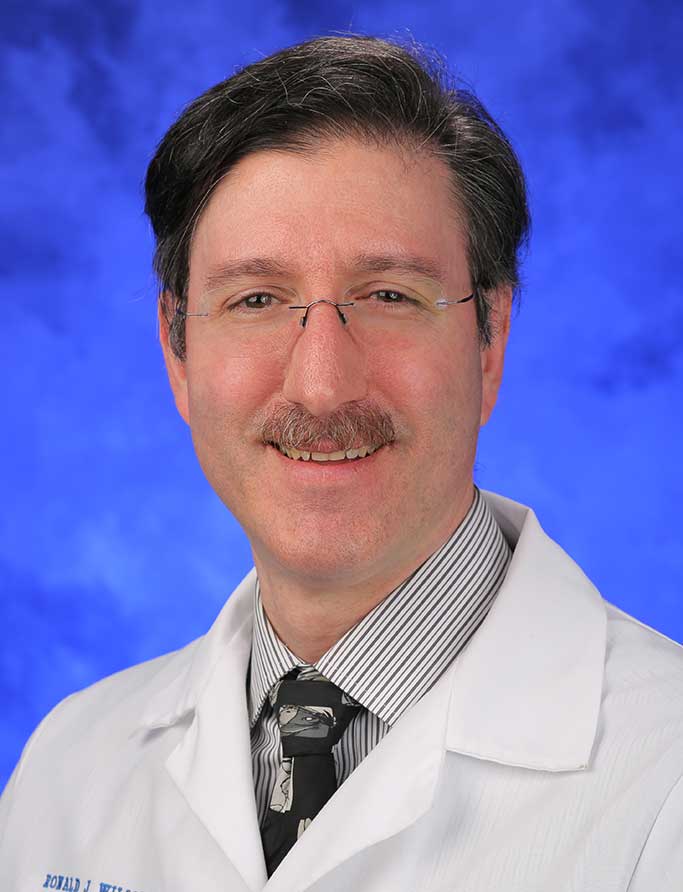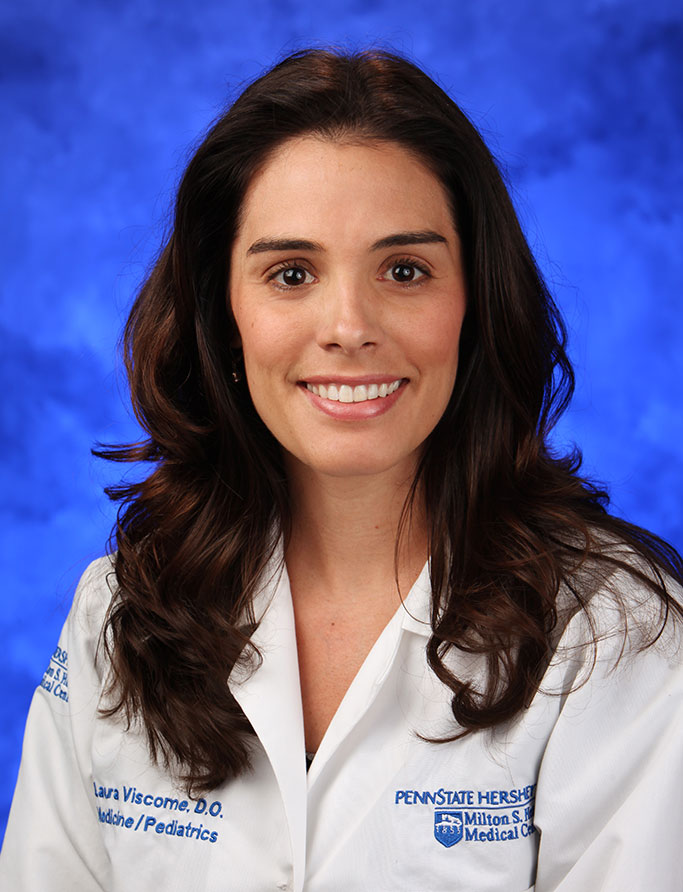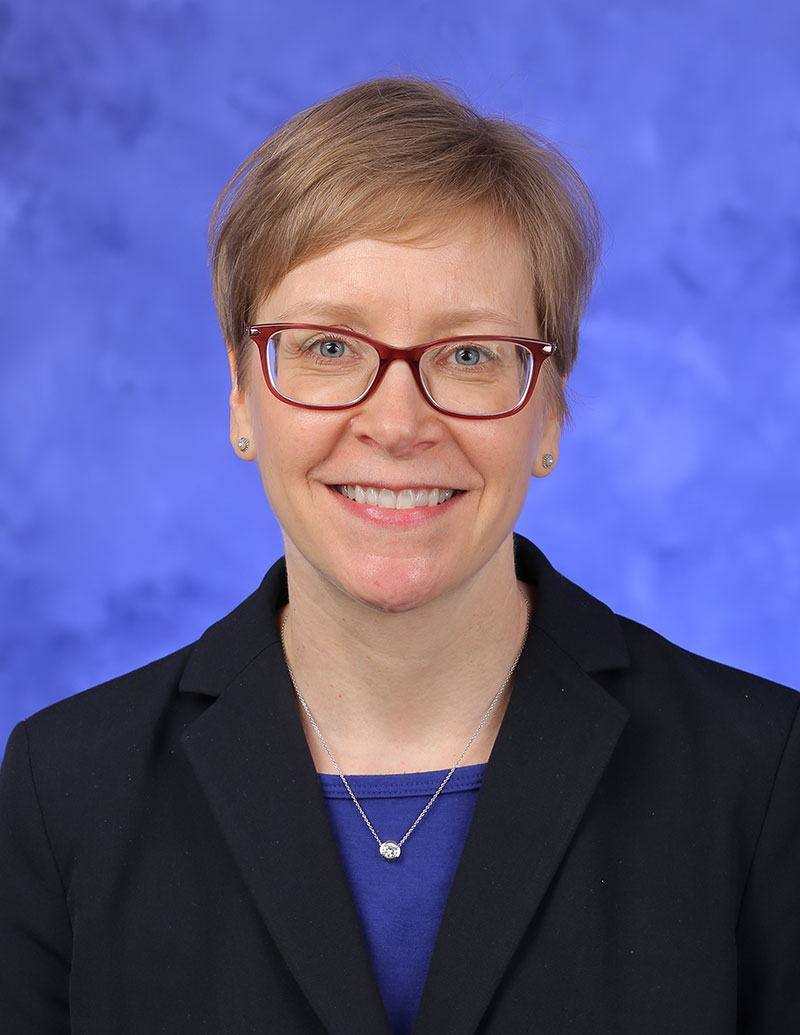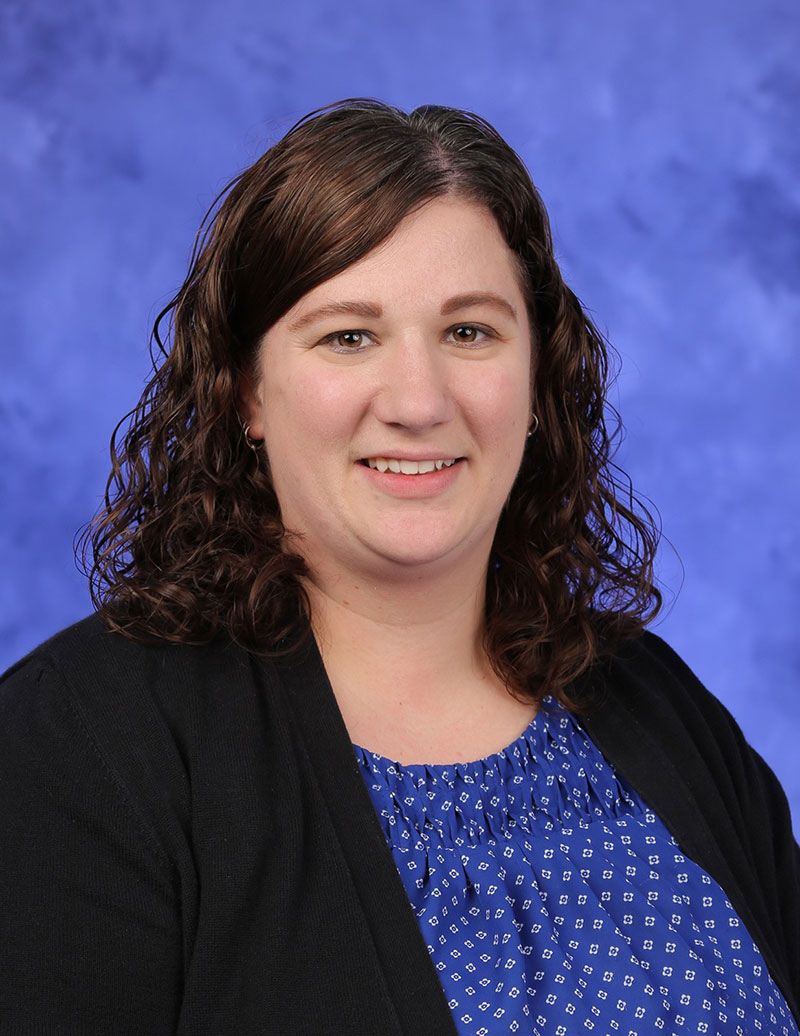Jump to topic
Search
Program Details
Our Internal Medicine/Pediatrics Residency is a tight-knit group of fantastic residents who are well-trained to become excellent internists and pediatricians, and to move on to their chosen career paths.
Residents rotate in four-week blocks either on pediatrics or medicine for about four months and then switch. This allows two full winters and two full summers on both medicine and pediatrics.
We have a very strong relationship with the Internal Medicine Residency and the Pediatrics Residency and have three identities – Medicine resident, Pediatrics resident and Med/Peds resident. This is easy for us as the adult and children’s hospitals are connected to each other.
Our residents are assigned a Med/Peds Coach (residency mentor) to help guide them on their career path. There is ample time for learning, as there is a protected academic half-day weekly as well as noon conference four days per week. Our residents become excellent educators. They have opportunities to present at the weekly Med/Peds Noon Conference. There also are extra opportunities for education and health system science training. This is on top of their individualized electives.
We invite you to explore our website for a more in-depth look at our program.
Learn More about the Residency
Welcome to the combined Medicine/Pediatrics Residency training program! Penn State’s Med/Peds Residency offers diverse training in both adult and pediatric medicine.
Knowing that some residents will pursue diverse career paths, the goal of the curriculum is to provide training that is rich in opportunity and experience. Our university, community and VA hospital rotations complement our combined Med/Peds continuity clinic in inner city Harrisburg.
You will spend the majority of your time at Penn State Health Milton S. Hershey Medical Center. You’ll attend continuity clinic at the Rose Garden Building in downtown Harrisburg, where we care for the underserved as well as adults and children with complex medical problems. To provide a broader experience in community hospital settings, you will also have duties at:
- Lebanon VA Medical Center in Lebanon
- Penn Medicine Lancaster General Hospital in Lancaster (adult community inpatient experience)
- Penn State Lancaster Outpatient Center
You will have the opportunity to seek out and participate in an away elective, nationally or internationally, in an area of interest.
Joint electives in a medicine and pediatrics subspecialty are also possible. Rotations in allergy, dermatology, endocrinology and rheumatology are common. For those residents going into fellowship, we offer an intermittent second continuity clinic in that specialty to gain further experience in that area and to build relationships with their faculty.
Our residents are the key to our success. Our diverse group of trainees come from far and wide and are dedicated, enthusiastic and hard-working. They excel in patient care, leadership and education.
We seek candidates with strong academic records, exceptional interpersonal skills and a sincere desire to work with and for adults and children.
I encourage you to explore more about our program and contact me at rwilliams@pennstatehealth.psu.edu if you have any questions about our program or the interview process.
Ronald J. Williams, MD
Program Director
The mission of this program is to provide innovative and diverse individualized education in a caring culture to achieve excellence in patient care and become leaders in Internal Medicine and Pediatrics who are prepared to pursue their chosen career path.
Aims
The program aims to foster a supportive and personalized learning environment in which each resident:
- Graduates from the program as a well-balanced and well-trained internist and pediatrician prepared for the next step in his or her chosen career path
- Can pursue all career interests with individualized faculty and peer support
- Is provided the opportunity to excel in a transition of care curriculum
- Has the opportunity to develop skills to excel in medical education and quality improvement
- Fosters excellent relationships with the pediatric and medicine residencies while still maintaining his or her own Med-Peds identity
- Feels a sense of ownership in shaping and improving the residency program
General Application Information
All applicants must apply through the Electronic Residency Application Service (ERAS) by Dec. 1 and must register for a PL-1 position through the National Resident Matching Program (NRMP).
Applications are considered without regard to race, religion, gender, sexual orientation or national origin. Only J-1 visas are sponsored.
Applicants who are offered interviews, match into the Med-Peds residency program, and successfully complete the residency, will be able to apply for admission to the certification process of both the American Board of Pediatrics and the American Board of Internal Medicine. Please refer to the American Board of Pediatrics and the American Board of Internal Medicine websites for additional information.
Application Requirements
- Personal statement
- MSPE (dean’s letter)
- Medical school transcript
- USMLE or COMLEX scores
- Three to four letters of recommendation from faculty members with whom the applicant has worked
The program does not require a letter from the applicant’s department chair.
Interview Process
Interviews are by invitation only, and will be conducted from late-October through January. Those who are invited for an interview will be notified by email and are asked to respond within 72 business hours so the program can best accommodate scheduling needs.
PGY-4
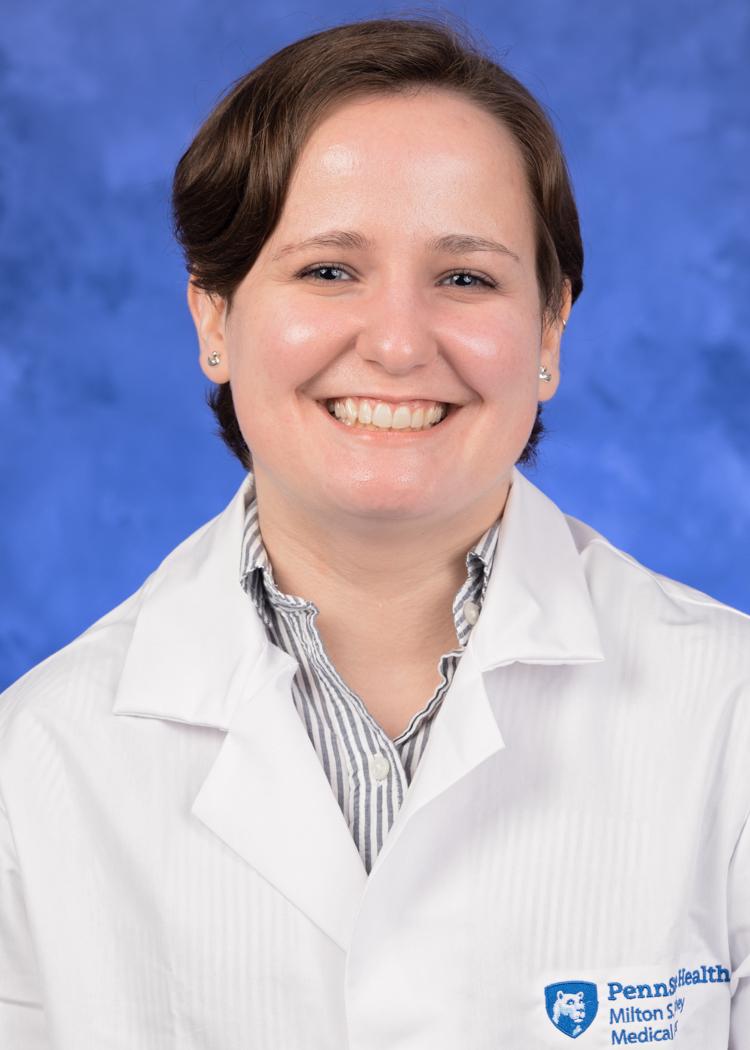
Natalie Balfe
Hometown: Chicago, IL
Undergrad: Seton Hill University
Med School: Chicago Medical School
Hobbies: Learning to play guitar, rock climbing, cooking and running
Fun Fact: I’ve had two pets run away on me, my pet hamster and my pet fish
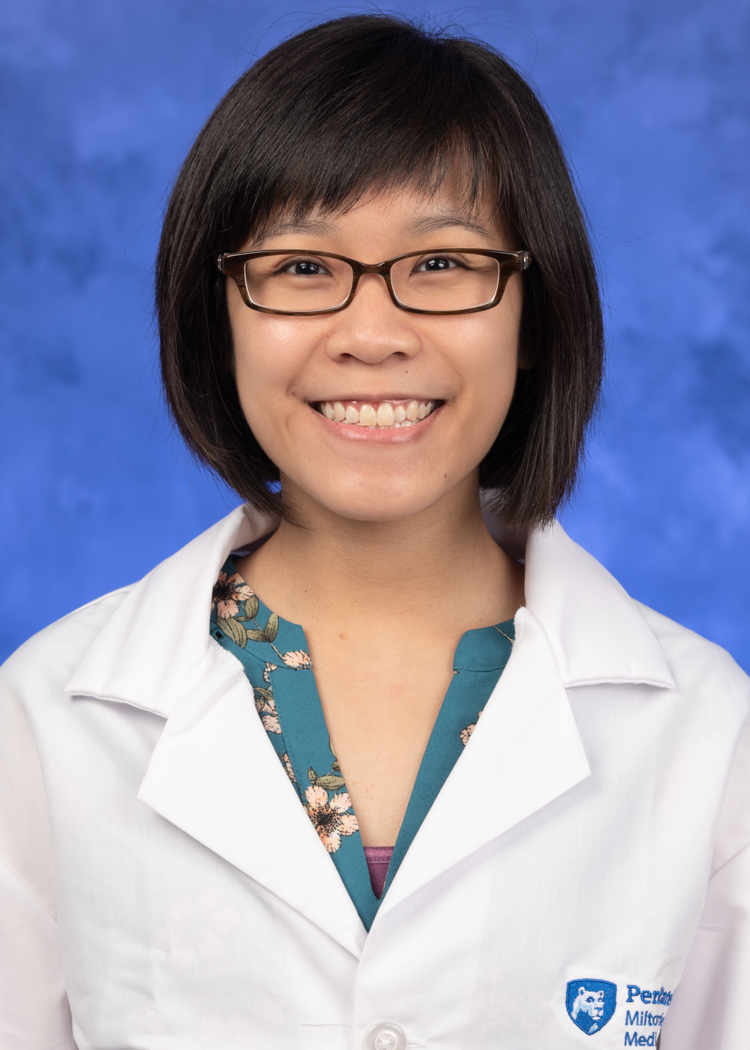
Jackie Chan
Hometown: Elk Grove Village, IL
Undergrad: University of California
Med School: Eastern Virginia Medical School
Hobbies: Bullet journaling, creating art-related content on YouTube, and singing
Fun Fact: I was involved with the production of my medical school’s music video parody, including singing for the music video
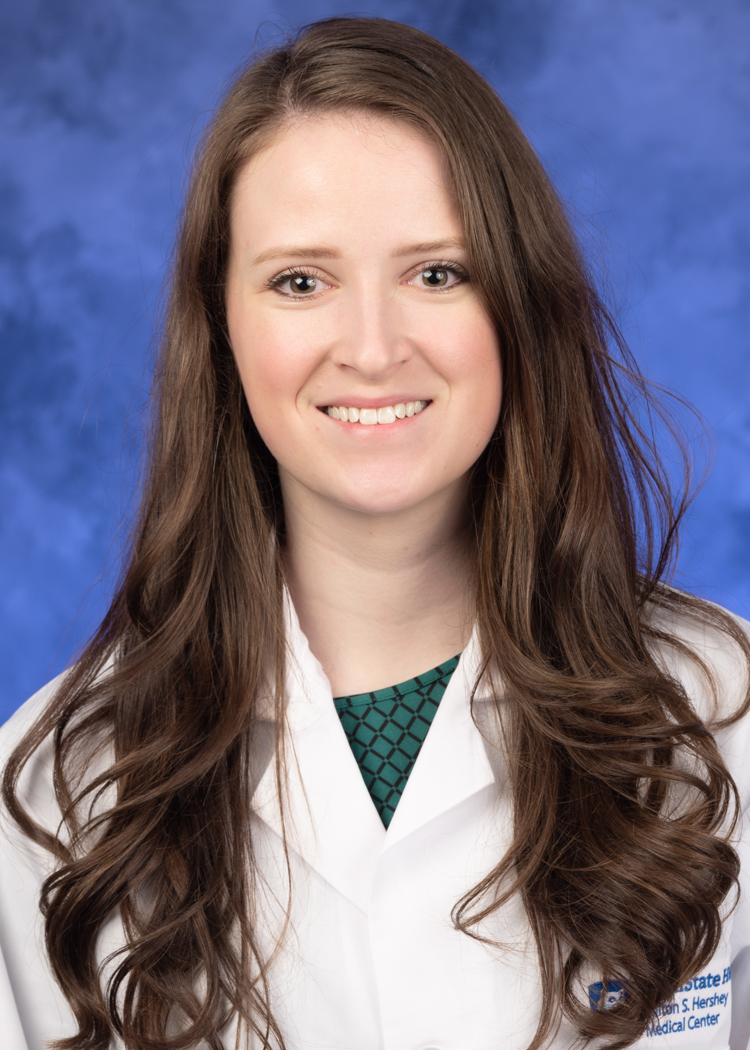
Elizabeth Koester
Hometown: Fort Wayne, IN
Undergrad: Indiana University
Med School: Marian University
Hobbies: Running and college basketball
Fun Fact: I’ve climbed a volcano
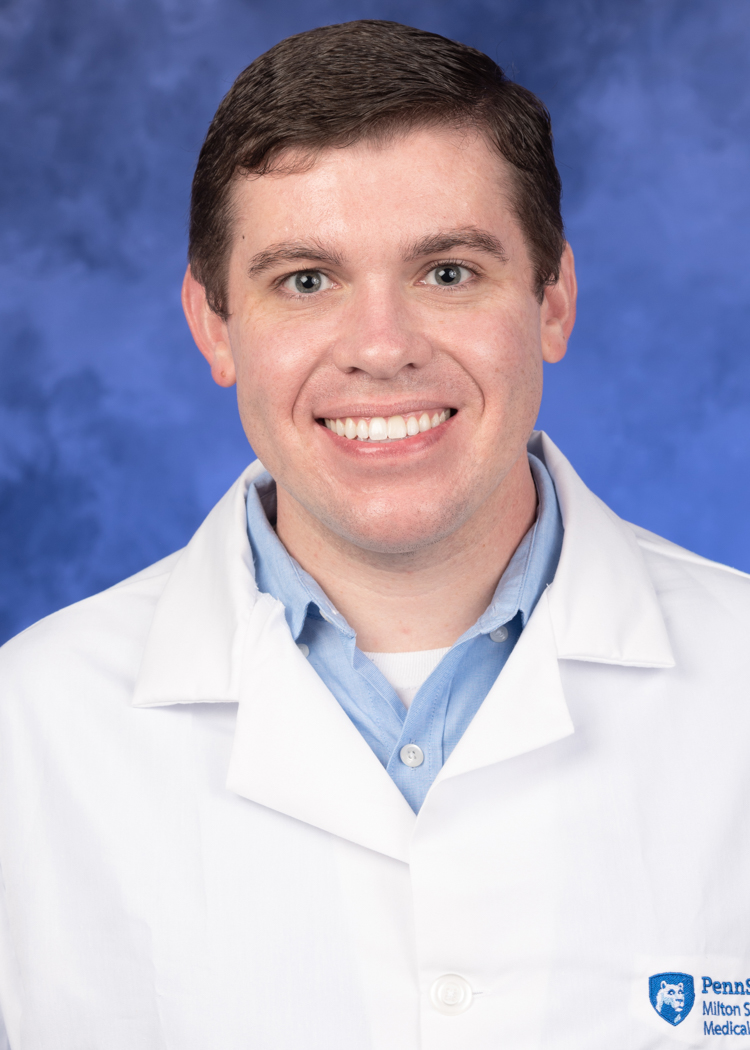
Bobby Mullin
Hometown: Jamison, PA
Undergrad: Penn State
Med School: West Virginia
Hobbies: Long-distance running, traveling, Penn State football, Downhill skiing, and Binge watching TLC
Fun Fact: I got stung by a swarm of bees and was stung over 100 times
PGY-3
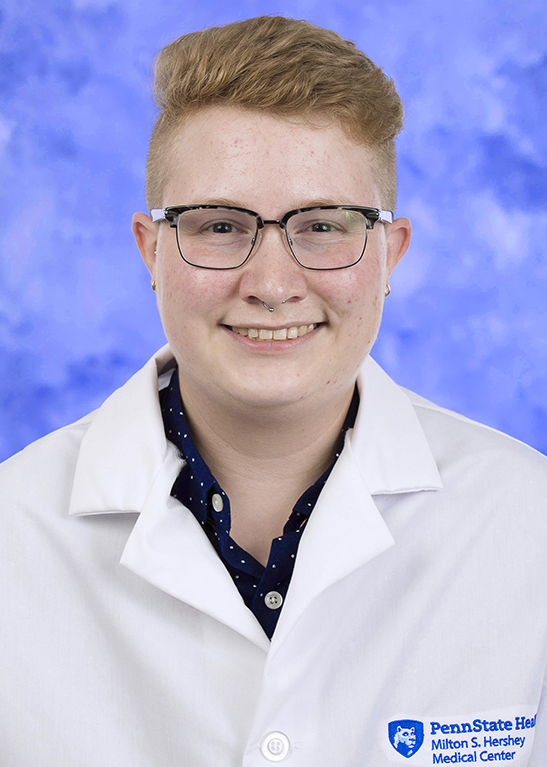
Miles McGovney
Hometown: Albuquerque, NM
Undergrad: Chatham University
Med School: University of Michigan
Hobbies: Playing Dungeons and Dragons and other tabletop RPGs with friends, reading fantasy/science fiction books, and generally doing very nerdy things.
Fun Fact: I make my own chainmail armor
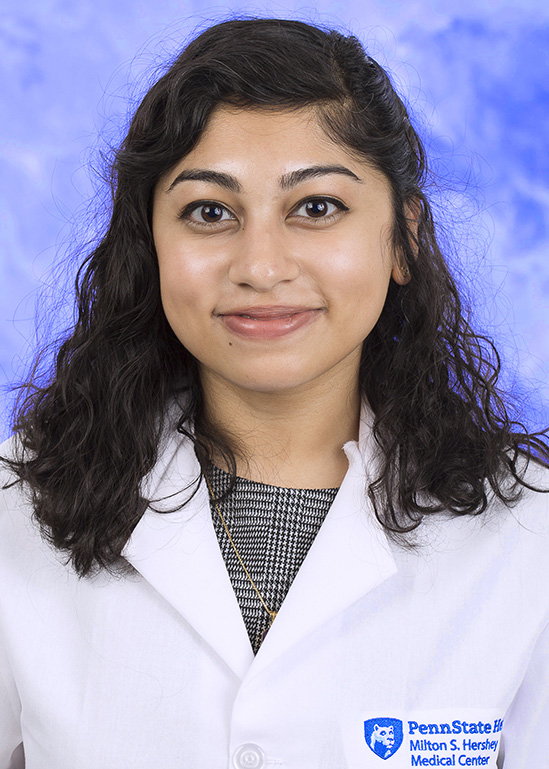
Pankhuri Mohan
Hometown: Birmingham, UK; Zionsville, IN; Pleasanton, CA; Princeton, NJ
Undergrad: New York University
Med School: Rutgers University
Hobbies: Cooking, eating, fine dining, exploring new cuisines, dancing, reading, meditating/yoga, the scenic outdoors
Fun Fact: I am born on New Years and when I was little, my parents convinced me that the world was celebrating for my birthday.
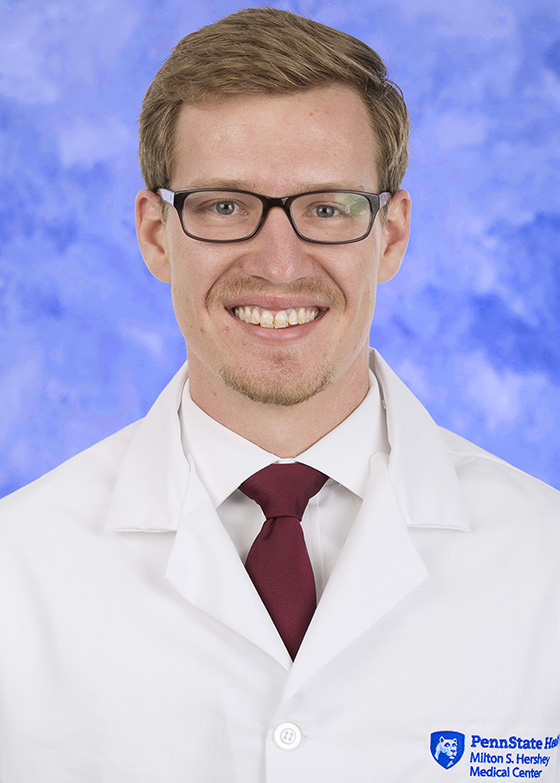
Shane Stone
Hometown: Chesterfield, VA
Undergrad: Liberty University
Med School: Edward Via COM
Hobbies: Hiking, fishing, playing basketball, disc golf, and exploring new restaurants and breweries
Fun Fact: I am a new father!
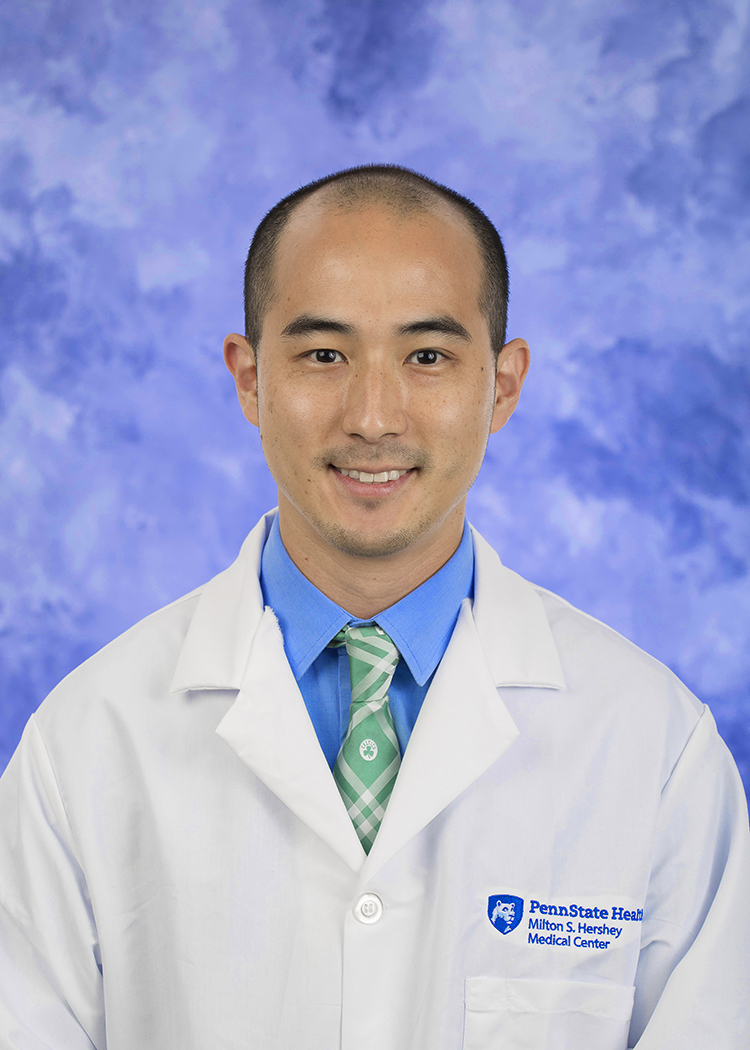
Kelsey Yamada
Hometown: Waipahu, HI
Undergrad: Creighton University
Med School: University of Nebraska
Hobbies: trail riding
Fun Fact: Growing up in Hawaii, I was the only person I knew who cheered for Penn State football
PGY-2
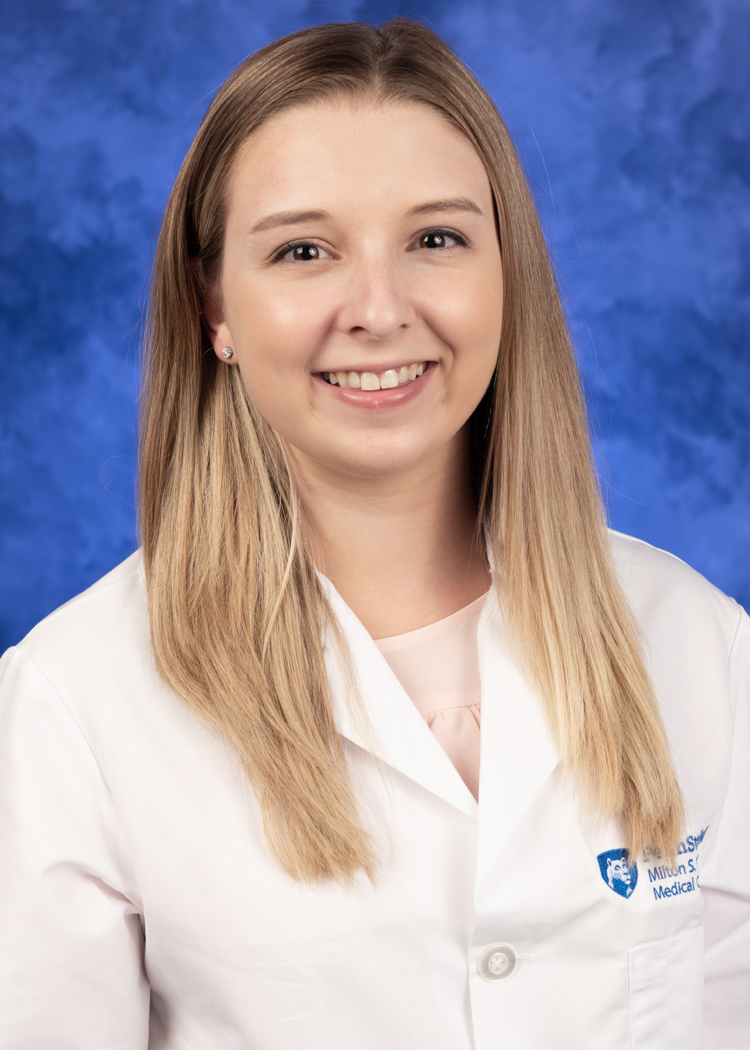
Kurestin Miller
Hometown: Rock Hill, SC
Undergrad: Furman University
Med School: University of South Carolina School of Medicine Greenville
Hobbies: Playing piano, watching Broadway shows, dancing, going to OrangeTheory, baking and cooking
Fun Fact: I was a music major in undergrad
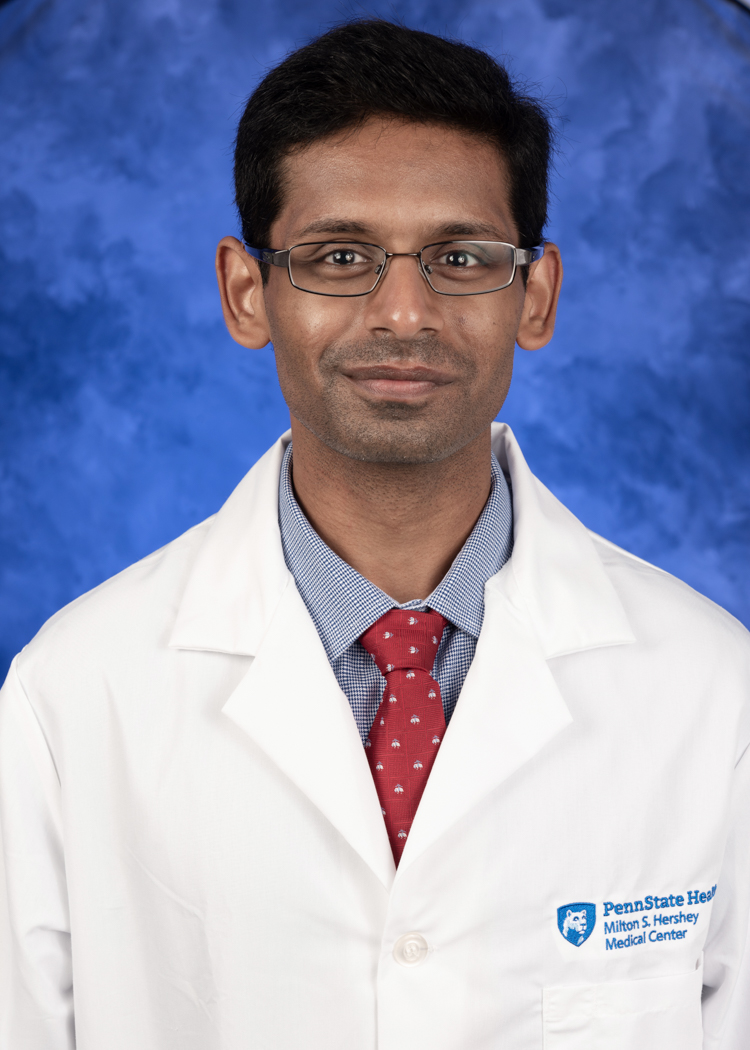
Vineet Mohanty
Hometown: Chicago, IL
Undergrad: Vanderbilt University
Med School: NY Institute of Technology
Hobbies: Running, weightlifting, playing/watching soccer and football, reading articles/books on world history
Fun Fact: While saltwater fishing I’ve caught (and released) an adult bull shark
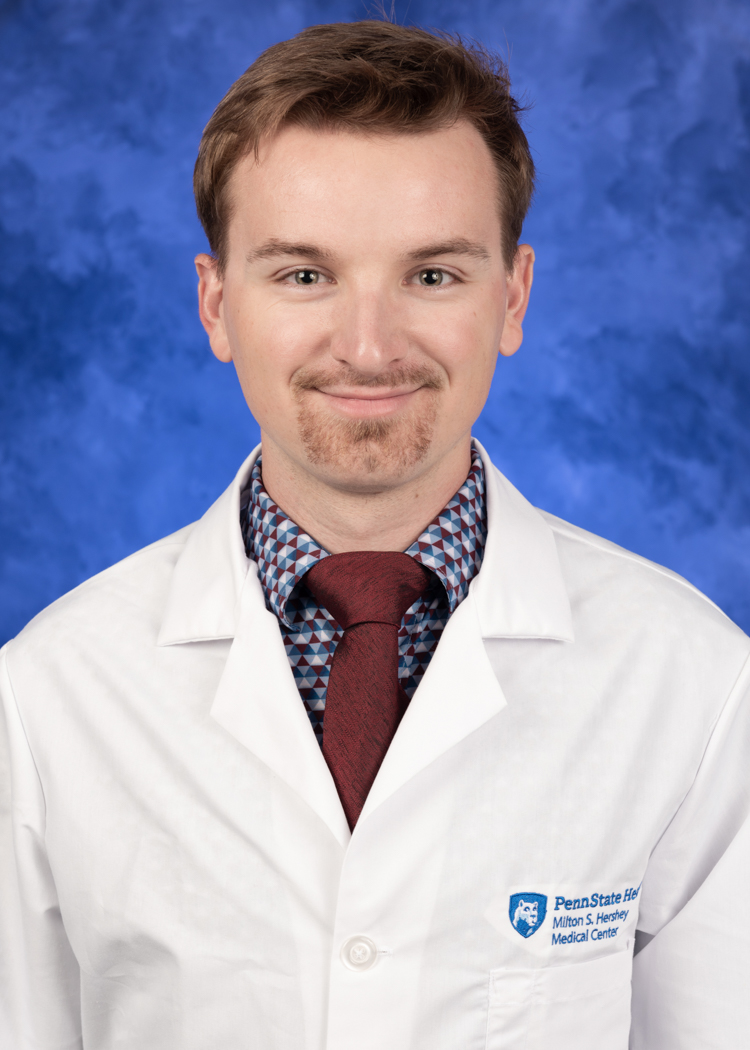
Andrew Nevin
Hometown: Shrewsbury, MA
Undergrad: Wellesley College
Med School: University of Massachusetts
Hobbies: Painting, sewing, baking
Fun Fact: I’ve driven on every single continent (except Antarctica)
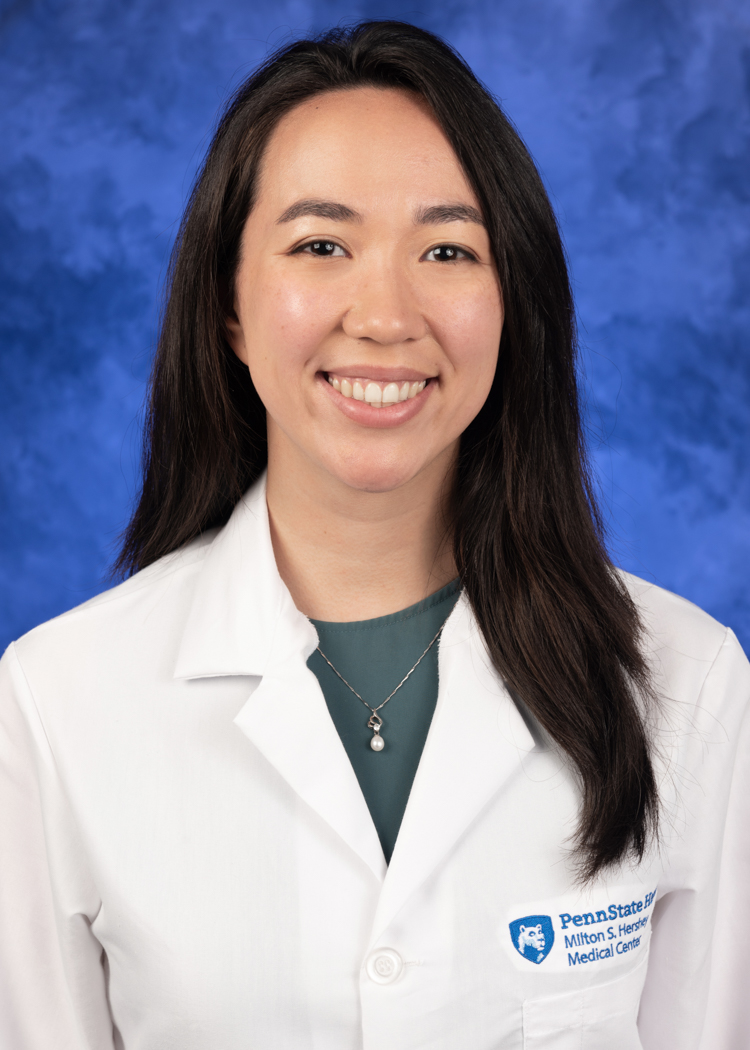
Filia Van Dessel
Hometown: Baltimore, MD
Undergrad: Messiah University
Med School: Penn State University
Hobbies: Hanging out at the beach, hiking, biking, backpacking, kayaking, fishing, reading, gaming
Fun Fact: I used to do research on hummingbirds
PGY-1
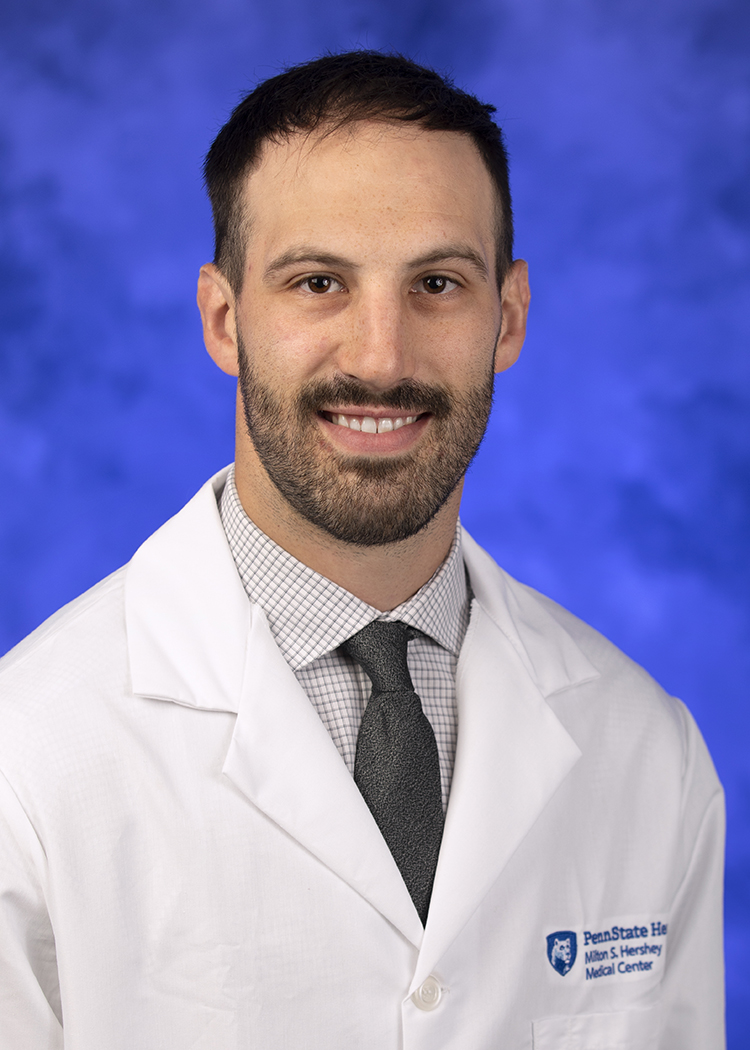
Jacob Colello
Hometown: Camp Hill, PA
Undergrad: Liberty University
Med School: Penn State
Hobbies: Spending time with family, fishing, hunting, playing Zelda, coaching wrestling, learning about nutrition, NFL football
Fun Fact: I have 4 siblings
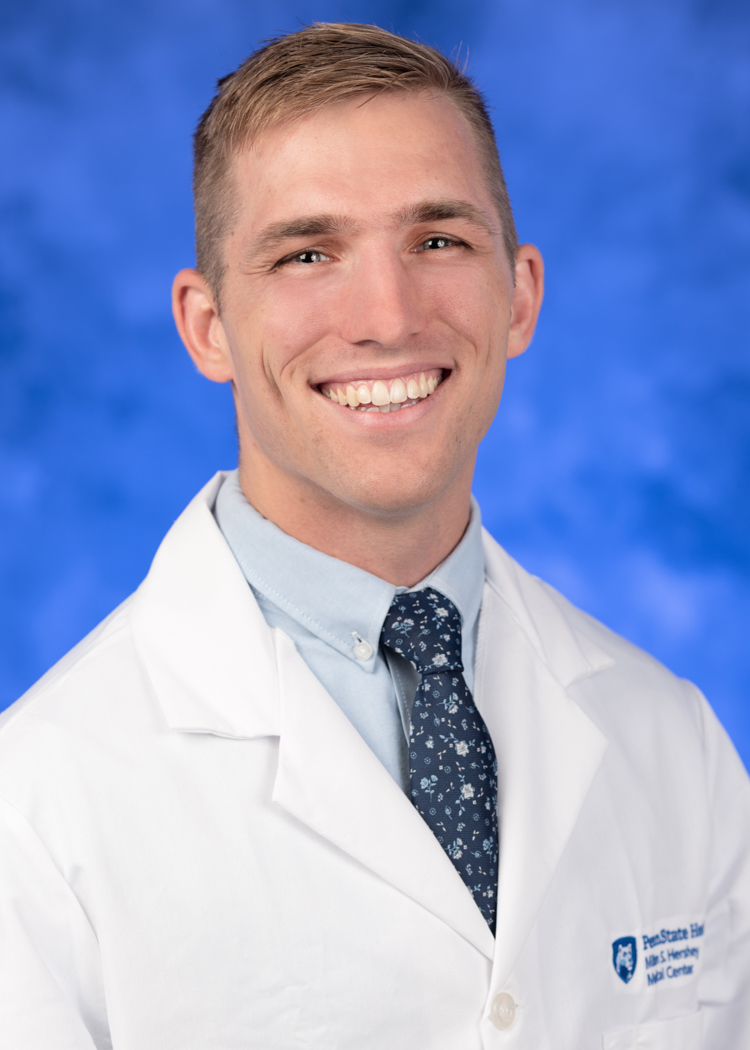
Matthew Darok
Hometown: Annville, PA
Undergrad: Messiah College
Med School: Penn State
Hobbies: “Reading” audiobooks, playing board games, coaching middle and high school wrestling, serving on my church’s worship team, spending time with friends and family
Fun Fact: I recently started jiujitsu classes with my wife and love it!
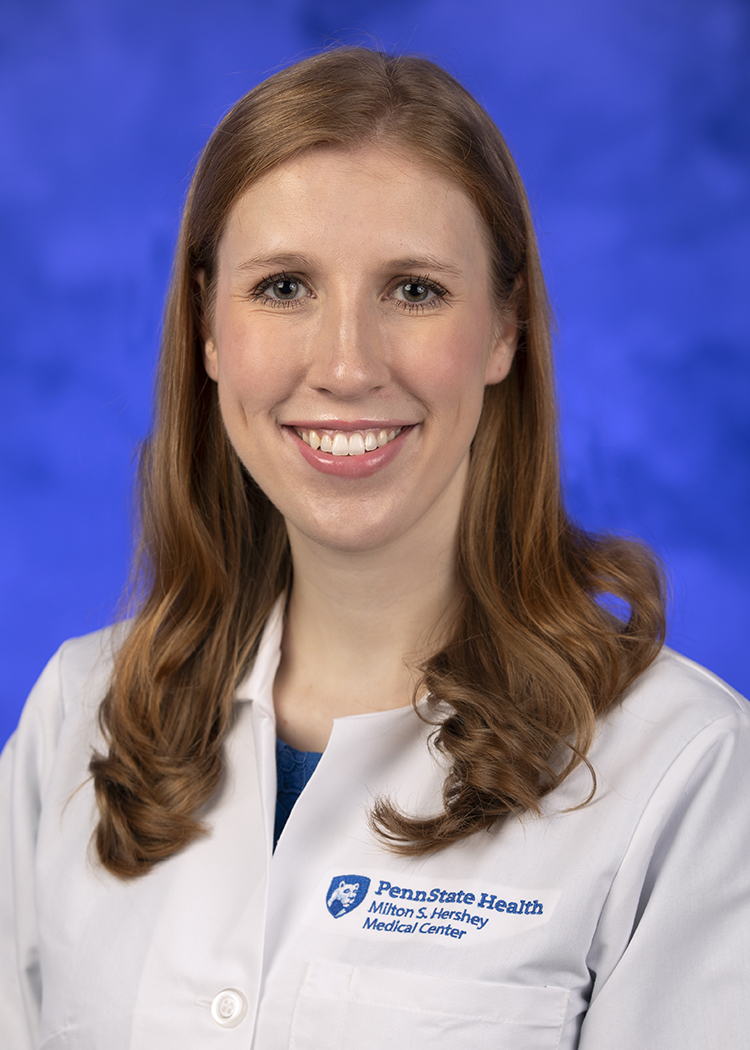
Sarah Janczewski
Hometown: North Huntingdon, PA
Undergrad: Washington & Jefferson College
Med School: West Virginia University
Hobbies: Reading, watching movies, traveling, board games
Fun Fact: I traveled to the Middle East this year
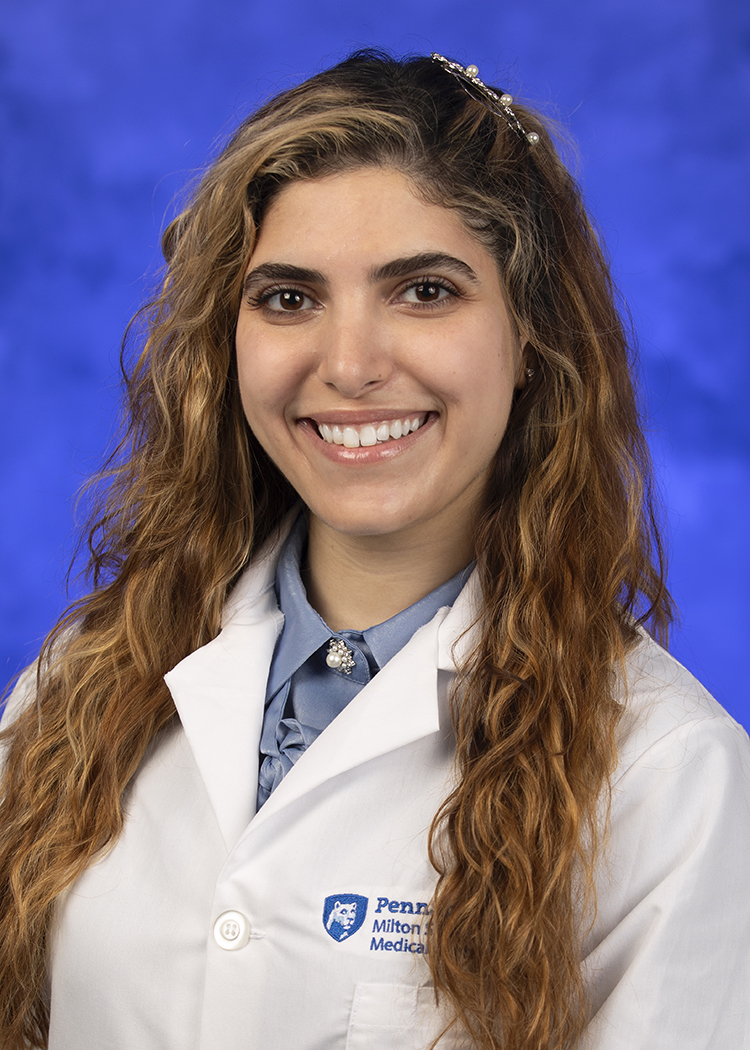
Nadia Obaed
Hometown: Jacksonville, FL
Undergrad: University of North Florida
Med School: Nova Southeastern University
Hobbies: Kayaking, paddle boarding, creating art, soccer, billiards, listening to wildlife/conservation/wellness podcasts!
Fun Fact: I saw snow for the first time this year, and this will be the first time I am living outside of Florida
Virtual Tour
Penn State Health
Penn State Health is a multi-hospital health system serving patients and communities across 29 counties of Pennsylvania. Its mission is to improve health through patient care, research, education and community outreach.
In December 2017, the system partnered with Highmark Health to facilitate creation of a value-based, community care network in the region. The shared goal of Highmark and Penn State Health is to ensure patients in the community are within:
- 10 minutes of a Penn State Health primary care provider
- 20 minutes of Penn State Health specialty care
- 30 minutes of a Penn State Health acute care facility
Learn more about Penn State Health
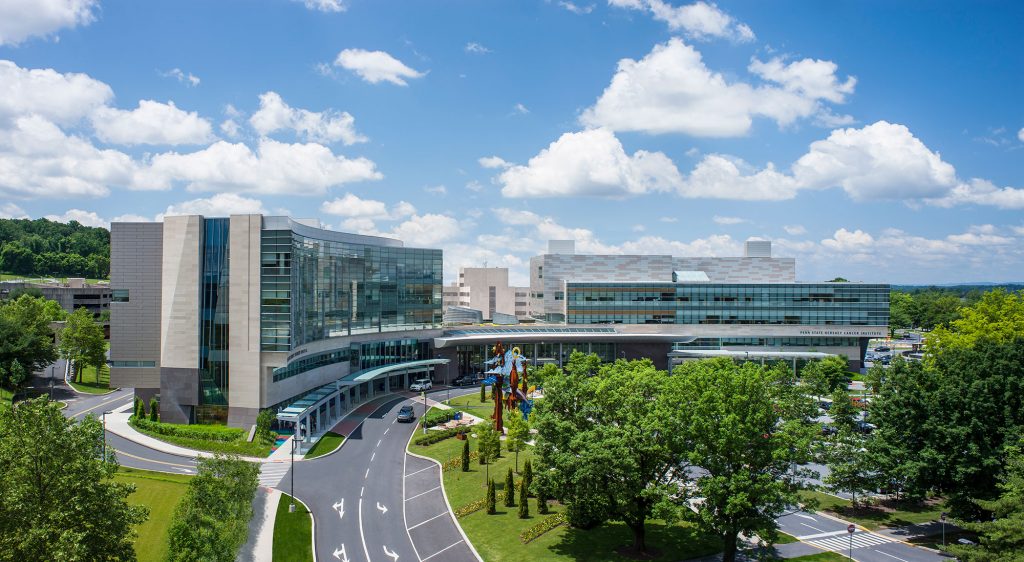
Penn State Health Children’s Hospital (left), Penn State Health Milton S. Hershey Medical Center (center) and Penn State Cancer Institute (right)
Penn State Health Milton S. Hershey Medical Center
500 University Dr., Hershey, Pa., 17033 (Derry Township, Dauphin County)
- The health system’s 647-bed flagship teaching and research hospital
- The only medical facility in Pennsylvania accredited as both an adult and a pediatric Level I (highest-level) trauma center
- Dedicated surgical, neuroscience, cardiovascular, trauma and medical intensive care units
- Accredited Life Lion critical-care transport providing more than 1,100 helicopter and approximately 750 ground ambulance transports per year
- More than 1,300 faculty members and more than 650 residents and fellows
- Approximately 29,000 admissions, 73,000 emergency department visits, 1.1 million outpatient visits and 33,000 surgical procedures annually
- Designated as a Magnet hospital since 2007
Learn more about Milton S. Hershey Medical Center
Penn State Health Children’s Hospital
600 University Dr., Hershey, Pa. 17033 (Derry Township, Dauphin County)
- An eight-story, 263,000-square-foot-facility built in 2013 and expanded in 2020
- 160 licensed pediatric beds, 26-bed pediatric intensive care unit and a 56-bed neonatal intensive care unit
- Level IV (highest-level) neonatal intensive care unit
- Level I quaternary (highest-level) pediatric intensive care unit
- Level I (highest-level) pediatric trauma center designation
- Intermediate care unit
- Dedicated pediatric operating rooms
- More than 150,000 pediatric outpatient visits, 20,000 pediatric emergency room visits, and approximately 5,000 pediatric patient discharges annually
Welcome to Hershey
More About Hershey
Interested in learning more about living and working in Hershey, Pa.? See details here:
Wellness, including emotional, spiritual, social and physical health, is a crucial component to training and to becoming a professional, compassionate and resilient physician. Self-care is a skill which must be continually practiced and reinforced. Penn State College of Medicine and Penn State Health are committed to addressing wellness among residents and fellows, with multiple resources readily available.
Institutional resources
- Visit BeWell – a health program designed to support Penn State Health employees
- See Penn State College of Medicine wellness resources here
- Employee Health Care Concierge and Case Management Service
- Partners in Medicine
Moving to a new city with your family does not have to be stressful. Residency programs have assisted many significant others with finding employment. There is also a GME-Wide Partners in Medicine (PIM) group that offers networking opportunities as well as various social and community oriented activities. - The Doctors Kienle Center for Humanistic Medicine
- Active and easily accessed Office of Professional Mental Health
Graduate medical education resources

Graphic source: University of Maryland
Program-Level Resources
There are many factors that contribute to a person’s happiness, and the active pursuit of balance leading to happiness has become the buzzword everyone loves – “wellness.” Wellness attempts to guide individuals to ultimately live each day as the best versions of themselves. There are eight primary elements to wellness, and the Internal Medicine/Pediatrics Residency provides extraordinary support to each of its residents for every component.
What is great about wellness, and also what makes it challenging, is every person has unique wellness needs. Each resident in the program is provided with:
- formal education on identifying gaps or deficits in overall well-being to allow for self-stewardship of wellness;
- resources to support building and repairing any identified or potential deficits;
- group practicums for commonly encountered challenges with wellness; and
- support from a wellness evaluation and improvement committee, comprising both residents and attending physicians, which meets to develop a multidisciplinary wellness curriculum.
- opt-out mental health sessions coordinated with the Office of Professional Mental Health to offer confidential check-in sessions with the option to continue services, if desired. The residency program identifies optimal meeting times to ensure residents are able to attend.
 Environmental wellness: Occupying a pleasant, stimulating, supportive environment that supports well-being
Environmental wellness: Occupying a pleasant, stimulating, supportive environment that supports well-being
- Penn State Health Milton S. Hershey Medical Center and Penn State Health Children’s Hospital connected, allowing for stable commute times, frequent visits to friends “on the other side,” access to a variety of food options
- Shuttle service
- Well-lit, safe walking paths through campus and throughout the region of Hershey, Harrisburg and Lancaster
- Meditation room and garden
- Multiple outdoor seating venues, able to be used as desired for didactics and “sunshine rounds”
- Opportunities for indoor and outdoor activities, including a program-provided wellness activities document with sections for:
- Mental health
- Fitness
- Arts and music
- Zoos, aquariums and theme parks
- Cooking and baking
- Books and audiobooks
- COVID-19 quarantine activities
 Emotional wellness: Understanding and respecting feelings, values and attitudes and the impact every experience has on these attributes
Emotional wellness: Understanding and respecting feelings, values and attitudes and the impact every experience has on these attributes
- Debriefing sessions after significant events
- Formal education in trauma psychology and recognition of burnout in self and others during didactics
- Schwartz Rounds, a forum for health care professionals from various disciplines to discuss and examine the emotional and social challenges that arise in caring for patients
- An engaging, dedicated Office for Professional Mental Health that offers direct clinical care to resident trainees
 Vocational wellness: Participating in work that provides personal satisfaction and life enrichment that is consistent with values, goals and lifestyle
Vocational wellness: Participating in work that provides personal satisfaction and life enrichment that is consistent with values, goals and lifestyle
- Individualized curriculum with customizable electives
- Medicine/Pediatrics noon conferences
- Professional coaches assigned during intern year to guide professional development
- Formal goal-setting curriculum to identify areas for professional growth and improvement
- Multitude of formal education programs to aid in career development for research, medical education, humanitarianism, global health, public health, health systems science and quality improvement
- Regular resident roundtables, house staff lunches and program business meetings to address program improvement initiatives
- PAWS UP program to recognize and celebrate the incredible work force at Penn State Health
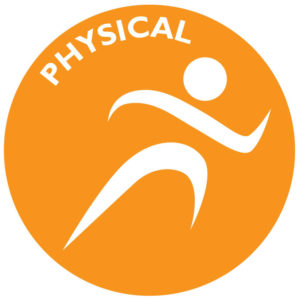 Physical wellness: Caring for and nurturing the body for optimal health and function
Physical wellness: Caring for and nurturing the body for optimal health and function
- On-campus fitness center
- Bike share program
- Fitness Your Way pass providing access to more than 10,000 gyms nationwide
- 30-day activity challenges
- Susquehanna Area Mountain Bike Association (SAMBA) bike trails, with three close by campus
- Appalachian Trail access
- Discounted meal plans for both national and local meal prep
- Multiple year-round farmers’ markets with local, affordable organic produce
- Employee Health Care Concierge
 Financial wellness: Managing resources to live within means and developing skills to make informed financial decisions and investments
Financial wellness: Managing resources to live within means and developing skills to make informed financial decisions and investments
- Regular meetings with financial adviser
- Low cost of living
- Personal finance lectures
- Student loan management advice
- Stipend for medical education and reimbursement for conference travel
- One-on-one counseling with retirement representatives
 Spiritual wellness: Finding purpose, value and meaning in life with or without organized religion
Spiritual wellness: Finding purpose, value and meaning in life with or without organized religion
- Opportunities for spiritual education with hospital chaplains
- On-site multi-faith worship area
- Weekly religious services held on site
- Biweekly guided meditation sessions
 Intellectual wellness: Developing and maintaining curiosity about all learning opportunities and responding positively to intellectual challenges
Intellectual wellness: Developing and maintaining curiosity about all learning opportunities and responding positively to intellectual challenges
- Research coaches and mentors with a formal research curriculum and track for those interested
- Literature search services through Harrell Health Sciences Library
- Physician Writers’ Group workshops
- Dedicated Learning and Leadership Development team
 Social wellness: Establishing skills to encourage communication, trust and conflict management while engaging and supporting one other
Social wellness: Establishing skills to encourage communication, trust and conflict management while engaging and supporting one other
- Med/Peds Wednesday, a monthly get together of program residents for socializing and good food
- Quarterly class wellness nights with coverage of clinical duties
- Program-coordinated residency wellness events and retreats
- “Big/Little” program
- Pediatric administrative and wellness sessions (PAWS) twice monthly
- Volunteer opportunities to help underserved patients at Bethesda Mission
- Volunteer opportunities with THON (Penn State IFC/Panhellenic Dance Marathon) for childhood cancer
- Volunteer opportunities at Camp Kydnie, Camp Spifida, Camp STAR, PA Vent Camp and Camp Lionheart for children with chronic illness
Department of Pediatrics Diversity, Equity and Inclusion Council
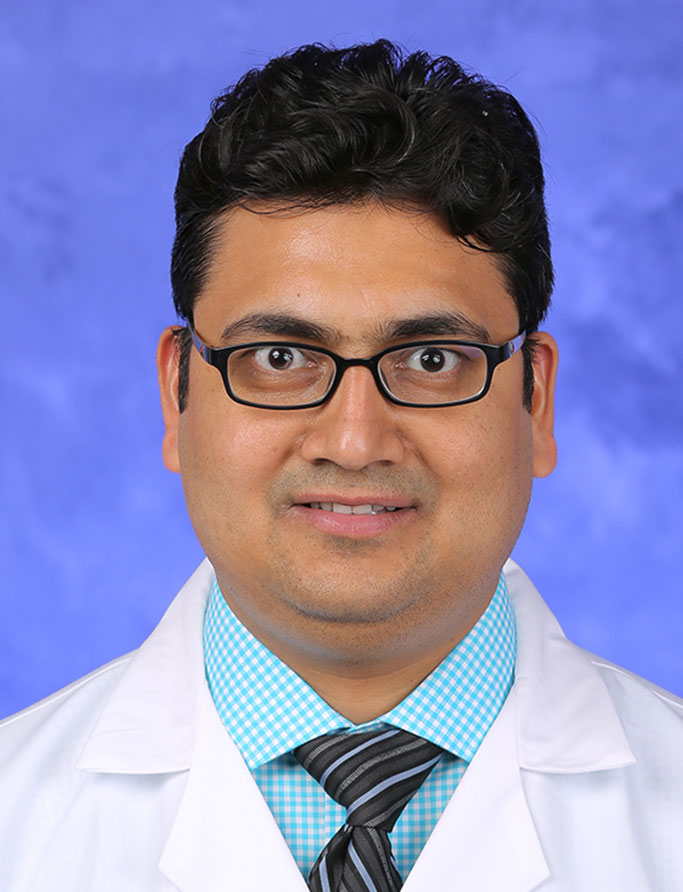
Dr. Ashutosh Kumar
The Department of Pediatrics Diversity, Equity and Inclusion (DEI) council is led by the vice chair of DEI, Ashutosh Kumar, MD, and is composed of physicians (including residents) and nurses from across the Department of Pediatrics. The council’s mission is to continually improve the inclusivity and equity with which the Penn State College of Medicine Department of Pediatrics provides healthcare, medical training, and advances medical science by:
- Providing pediatric patients and their families with excellent, compassionate, culturally responsive and equitable care.
- Supporting the department in recruiting, hiring and retaining a group of diverse faculty, trainees and staff, while equipping Department members to provide culturally responsive and equitable care.
- Ensuring that scholarly pursuits account for, evaluate and address potential social determinants of health beyond race and ethnicity, and that our research reflects a diverse and representative population.
- Striving to ensure our educational experiences foster and value equity, inclusivity, cultural competency and the needs of a diverse population.
Institutional Resources
Penn State Health and Penn State College of Medicine celebrate, embrace and support the diversity of all patients, faculty, staff, students and trainees.
Office for Diversity, Equity and Inclusion
In keeping with this, Penn State Health has an active Office for Diversity, Equity and Inclusion with various programs, networks and resource groups, including:
- Talks and lectures on diversity, equity and inclusion through the Inclusion Academy
- Regular events on topics such as eradicating racism and creating a culture of inclusiveness
- Many Business Employee Resource Groups (BERGs), including:
- Disability Business Employee Resource Group
- Interfaith Business Employee Resource Group
- LGBTQ+ Business Employee Resource Group
- Military and Veterans Business Employee Resource Group
- Multicultural Business Employee Resource Group
- NextGen Business Employee Resource Group
- Black Physician Professional Staff Association – Resource Group
- Hispanic Professional Association
- Asian Physician and Professional Staff Association
- International Workforce Inclusion
Learn more about the Penn State Health Office for Diversity, Equity and Inclusion
Learn more about the College of Medicine’s Office for Diversity, Equity and Belonging
Office for Culturally Responsive Health Care Education
The vision at Penn State College of Medicine and Penn State Health is to equip learners with the knowledge, skills and attitudes they will need to provide culturally excellent health care and research for an increasingly diverse U.S. population. The Office for Culturally Responsive Health Care Education was formed to help meet that goal.
Learn more about the Office for Culturally Responsive Health Care Education
Office for a Respectful Learning Environment
In addition, the institution does not tolerate discrimination, biases, microaggression, harassment or learner mistreatment of any kind, and any concerns are immediately addressed by the Office for a Respectful Learning Environment.
Learn more about the Office for a Respectful Learning Environment
Network of Under-represented Residents and Fellows
The Network of Under-represented Residents and Fellows (NURF) is a group of diverse residents and fellows representing all specialties. NURF’s goal is to promote cultural diversity in the residency programs through community involvement, mentorship with diverse faculty, professional networking and support for the recruitment of diverse medical students into the residency programs.
NURF is sponsored by the Penn State College of Medicine Graduate Medical Education Office and the Penn State Health Office for Diversity, Equity and Inclusion.
Learn more information about NURF
Anti-Bias Policy
Penn State Health and Penn State College of Medicine celebrate, embrace and support the diversity of all patients, faculty, staff, students and trainees. Beginning in May 2017, Penn State Health’s Patient’s Rights and Responsibility Policy was updated to include a section stating that patients cannot decline the care of a provider based on the provider’s race, religion, gender, age or sexual orientation. Penn State Health became one of the first health care systems nationwide to establish an official anti-bias policy that protects providers when such cases arise.
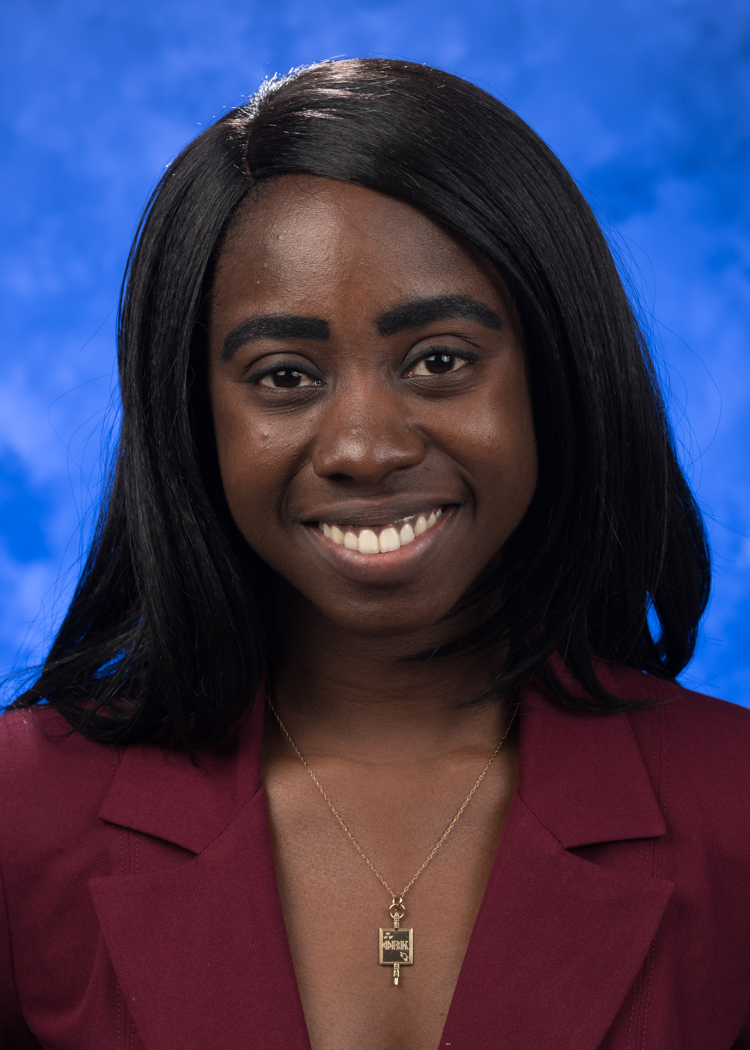 “A highlight for me as a resident physician is the opportunity to work directly with Penn State College of Medicine’s local Student National Medical Association (SNMA) chapter. (SNMA is) an organization that was founded in 1964 at my alma mater, Howard University College of Medicine, as a subdivision of the National Medical Association (NMA), to support current and future underrepresented medical students, addressing the needs of underserved communities, and increasing the number of clinically excellent, culturally competent and socially conscious physicians.”
“A highlight for me as a resident physician is the opportunity to work directly with Penn State College of Medicine’s local Student National Medical Association (SNMA) chapter. (SNMA is) an organization that was founded in 1964 at my alma mater, Howard University College of Medicine, as a subdivision of the National Medical Association (NMA), to support current and future underrepresented medical students, addressing the needs of underserved communities, and increasing the number of clinically excellent, culturally competent and socially conscious physicians.”
Resident
Resident Perks
- Annual book money allowance
- Residency pays for copies of Harriet Lane and Bright Futures Pocket Guide
- Departmental travel grants up to $2,000 for presenting research at conferences (including free poster production)
- “Meal Allowance” to be used at hospital cafeterias or Starbucks
- Program additionally provides lunch twice per week
- Stocked resident fridge (free meals, snacks and drinks at night)
- Free American Academy of Pediatrics (AAP) membership providing monthly print journals (Pediatrics and Pediatrics in Review) as well as Board Review Questions (PREP)
- Free American College of Physicians (ACP) membership
- Free board preparation question banks and teaching materials
- Free certifications and updates of BLS, PALS, NRP and ATLS
- Free on-site parking
- Retreats and wellness events paid for by residency
Mailing Address
Medicine/Pediatrics Residency
Penn State Health Children’s Hospital
600 University Dr.
Mailcode H085
Hershey, PA 17033
General Contact Information
Phone: 717-531-5685
Curriculum Details
Highlights
- Penn State Health Milton S. Hershey Medical Center is a large, academic tertiary and quaternary referral center, with Penn State Health Children’s Hospital right next door (attached)
- Offers experience in the highest-level NICU, PICU and medical ICU, in one place
- Balanced Medicine/Pediatrics residency program
- Global Health opportunities including institution-wide affiliation with Ghana
- Diversity and inclusion lecture series
- Residents as educators curriculum
- Medical education elective
- Woodward Center sessions and teaching champion retreats
- Medicine/Pediatrics resident-created simulation sessions to practice rapid responses/code situations offered monthly
- Combined Medicine/Pediatrics continuity clinic
- Health System Science, QI and Transition education
Overview
Since its inception in 1988, the Internal Medicine/Pediatrics Residency has trained well-balanced medicine/pediatrics physicians who excel in patient care, leadership and education. The success of the program begins with the dedicated residents who are integral in the formulation of the diverse experiences that are offered. Due to the varied experiences, residents can explore their interests during training and are well-equipped to pursue any medical specialty career path they wish.
The program allows residents to participate in a variety of rotations to help shape their future medical careers. Interns rotate for 16 months – eight months in medicine and eight months in pediatrics. This rotation helps build a strong foundation of knowledge and confidence prior to starting the senior resident-level rotations. Residents rotate every two to four weeks, alternating between medicine and pediatrics approximately every four months.
Additional rotations are available to help residents tailor their education to fit with their interests, including, but not limited to, the following:
- Caring for the underserved population (various locations)
- Milton Hershey School (cost-free private residential school for children from low-income families)
- Emergency medicine; residents participate as first responders with Penn State Life Lion critical care and emergency medicine services.
- Global health
- Hospitalist (for both adult and pediatric care)
- Education elective
- Create your own!
Standing Med/Peds Weekly Conferences – Tuesdays at noon
Each week, a member of the Med/Peds resident team presents a topic typically related to care in the outpatient setting. These conferences are an hour long and allow residents to polish their presentation skills and provide useful medical updates and clinical information. The Med/Peds faculty team members frequently attend and offer valuable information on how the topic relates to their respective specialty. Additionally, residents commit to an “academic half-day” on Thursdays, to dedicate a block of time to focus on core internal medicine and pediatric topics.
Med/Peds Continuity Clinic
The continuity clinic, located in downtown Harrisburg, allows residents the opportunity to work closely with an underserved patient population. The clinic serves adults and children with varying medical and health-related needs, from “bread and butter” to complex chronic medical conditions, gender identity, HIV, social concerns and substance abuse. Residents work exclusively with Med/Peds faculty to see a variety of patients for both annual physical exam and acute visits. They serve as the primary care providers for these patients.
The continuity clinic is part of the Reach Out and Read Program that provides books for infants and children during well-child visits, as a way to encourage literacy. The clinic also provides access to a Penn State Health social worker to help patients with a wide array of social concerns that may impact their care and well-being. A substance abuse clinic is also available on-site to help reduce barriers to medical care for those with addictions.
Quality Improvement Projects
Quality improvement (QI) is an important aspect of the Medicine/Pediatrics residency, with residents often involved in medicine and pediatrics QI projects and as resident representatives on unit-based quality committees. A detailed QI curriculum provides resources, education and experiences to help each resident create their own project prior to graduation or participate in our Med/Peds QI projects in the clinic. There are also opportunities for more education in this area with Penn State College of Medicine’s Health Systems Science Academy.
Transitional Care Curriculum
The Medicine/Pediatrics residents have created a transitional care program to educate adolescents and their parents on the process of transitioning medical care from pediatricians and pediatric specialty providers to adult providers and specialists. Residents help integrate the transitional care concepts into the pediatric specialty clinics and the well-child checkups in the pediatric clinics. The program has incorporated these concepts into the pediatric and internal medicine residency academic half-day curriculum to help teach these concepts to the categorical residents.
Supportive Learning Environment with Professional Coaching
There are 23 Medicine/Pediatrics Residency faculty members, all of whom have been trained in both medicine and pediatrics, and are actively involved in various aspects of the residency. Each member of the faculty is approachable and willing to provide advice and guidance to the residents. In addition, each resident is assigned a physician coach for professional development advice and encouragement throughout the four years of residency. The program also encourages you to find several mentors to help you reach your career goals.
Educational Resources
To support individual learning, residents are provided with memberships in the American College of Physicians (ACP), American Academy of Pediatrics (AAP) and the National Med-Peds Residents’ Association (NMPRA), as well as $600 for books and educational expenses per year.
The AAP membership also provides access to Pedialink online learning center, Pediatrics and Peds in Review. The ACP membership includes a subscription to the Annals of Internal Medicine. In addition, subscriptions to the Yale Pediatric and Internal Medicine Outpatient Curriculum are provided.
Ongoing board review occurs throughout the four years of residency, with residents attending a board review course at the end of training.
Residents as Educators
The Woodward Center for Excellence in Health Sciences Education is designed to cultivate excellence in health sciences education. Longitudinal didactics on multiple aspects of teaching, evaluation and feedback and goal-setting are offered. The Woodward Center provides programs such as Stanford Clinical Teaching Skills workshops and the Woodward Scholars program.
There are extra opportunities for education such as the Medical Education quarterly retreats, the Medical Education two-week elective, the Medical Education Track and many others. The program also offers a Health Systems Scholar position each year. You also have the opportunity to become an Area Health Education Center (AHEC) Scholar.
(Starting on internal medicine)
- Adult cardiology inpatient – four weeks
- Adult hematology/oncology inpatient – four weeks
- Vacation – two weeks
- Medicine elective – two weeks
- General medicine inpatient (Penn State Health Milton S. Hershey Medical Center) – four weeks
- General medicine inpatient (Lebanon VA Hospital) – four weeks
- Pediatric acute care clinic – four weeks
- General pediatric inpatient – four weeks
- Pulmonary pediatric inpatient – two weeks
- Pediatric gastroenterology/cardiology/nephrology inpatient – two weeks
- Pediatric night float – two weeks
- Vacation – two weeks
- Newborn nursery – two weeks
- Pediatric elective – two weeks
- Medicine night float – two weeks
- Medicine elective – two weeks
- Medical intensive care unit – four weeks
- Adult emergency medicine – four weeks
- Pediatric elective – two weeks
- Vacation – two weeks
- Development – four weeks
- Underserved rotation – four weeks
- Neonatal intensive care unit – four weeks
- Adult ambulatory – four weeks
- Adult nephrology – four weeks
- General medicine inpatient senior – four weeks
- Medicine elective – two weeks
- Vacation – two weeks
- Medicine elective – four weeks
- Pediatric critical care unit – four weeks
- Adolescent – four weeks
- Pediatric emergency medicine – two weeks
- Neonatal intensive care unit – four weeks
- Medicine elective – four weeks
- Vacation – two weeks
- Hepatology – two weeks
- Medicine elective – four weeks
- General medicine inpatient senior (Penn State Health Milton S. Hershey Medical Center or Lebanon VA Hospital) – four weeks
- Pediatric elective – four weeks
- Pediatric hematology/oncology inpatient – four weeks
- Vacation – two weeks
- Pediatric night float senior – two weeks
- Pediatric emergency department consult – two weeks
- Pediatric elective – two weeks
- Pediatric emergency medicine – four weeks
- Geriatrics – four weeks
- Adult cardiology inpatient senior – four weeks
- Medicine elective – four weeks
- Medical intensive care unit senior – four weeks
- Pediatric pulmonary inpatient senior – two weeks
- Pediatric gastroenterology/cardiology/nephrology inpatient senior – two weeks
- Newborn nursery senior – two weeks
- General pediatric inpatient senior – four weeks
- Pediatric elective (individualized curriculum) – four weeks
- Vacation – two weeks
- Medicine elective (individualized curriculum) – four weeks
- General medicine inpatient senior (Lebanon VA Hospital) – four weeks
- General medicine inpatient consult senior – two weeks
- Vacation – two weeks
- Medicine night house officer (senior) – two weeks
- Medicine elective – two weeks
- Medicine elective – four weeks
- Pediatric elective – four weeks
- Pediatric acute care clinic senior – four weeks
- Pediatric emergency medicine – two weeks
- Pediatric elective – four weeks
- Pediatric elective – two weeks
The multifaceted Clinical Simulation Center is a 9,500-square-foot space including some small encounter rooms, three larger bays, skills training areas and rooms for debriefing purposes.
Many educational opportunities are provided here, including a simulation instructor course (resulting in a certificate in simulation education), the Resuscitation Sciences Training Center and a standardized patient program. Along with full-bodied manikins of all ages, there are many types of clinical equipment in order to practice clinical diagnosis and treatment, as well as simulation scenarios such as procedures, surgery and trauma.
The Clinical Simulation Center is staffed for a majority of the day each weekday. The Pediatric Residency incorporates simulation lab didactics during one academic half-day each quarter.
Learn more about the Simulation Center
Pediatrics SIM Curriculum
Situ simulation sessions are focused on improving resident self-efficacy in assessment and stabilization of critically ill children. Sessions are run by chief residents solely for pediatric residents to provide protected educational space for targeted teaching of knowledge and skills.
Residents interested in global health have multiple opportunities at Penn State Health and Penn State College of Medicine, including international travel electives and virtual self-directed rotations.
The most popular affiliation/elective is to Ghana.
When: January or February
Duration: Four weeks
About the facility: The program takes place with Penn State Health Children’s Hospital’s clinical partner, Eastern Regional Hospital, a 429-bed hospital that serves as the primary care center for the local community and is the referral hospital for 16 district hospitals in the region. It includes a six-bed intensive care unit, lab, CT scan and X-ray. Many specialties are housed here.
Rotation details: Experiences in NICU, pediatrics floors and pediatric outpatient clinics. The department funds a significant portion of the trip for multiple residents each year, and upon their return, participant experiences are shared during a Grand Rounds presentation.
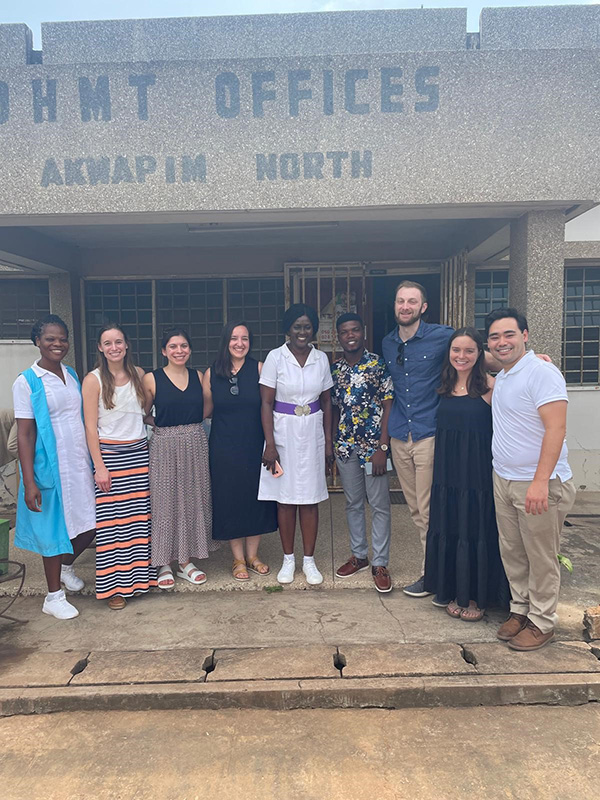
Pediatric residents join staff at the Community Base Health Planning & Services in Ghana.
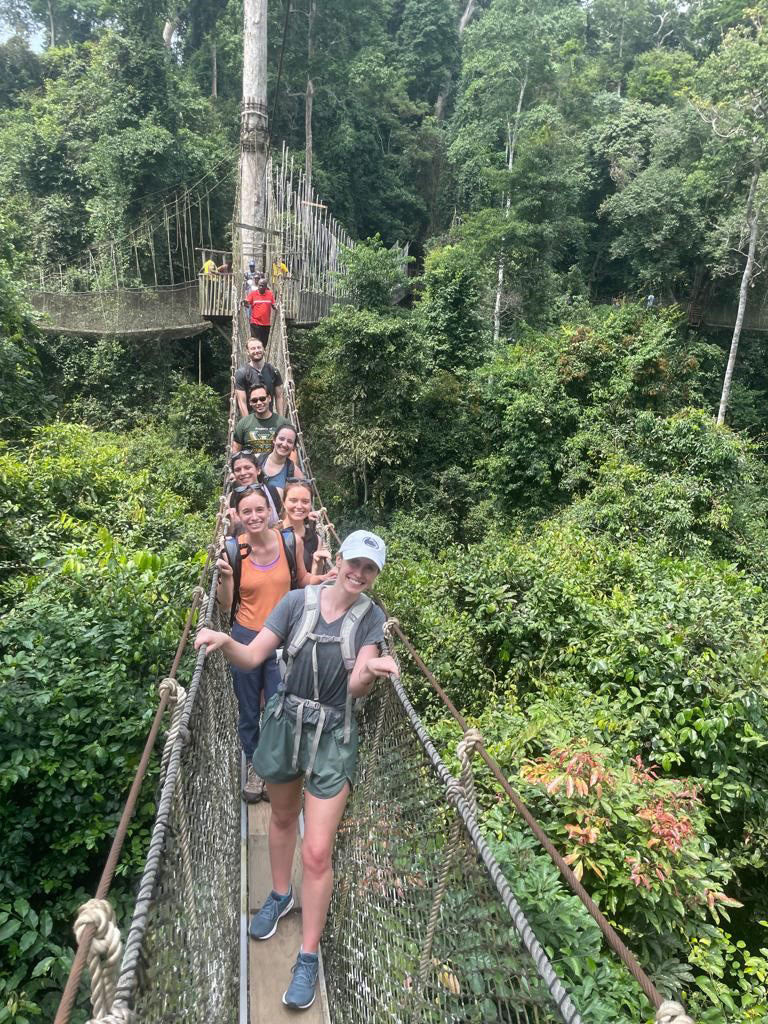
Pediatric residents exploring the Kakum National Forest.
The Med/Peds residency program is partnering with Penn State Health’s Global Health Center hosting a series of global health lectures taking place during the weekly noon conference. Lecture topics include:
- GH Scholars Program Overview and GH Scholars’ Perspectives on HIV Around the Globe
- Adaptations to Care and Evidence Based Care in LMIC Settings
- Poverty and Health
- Pediatrics and Ped Surgery in Rural Malawi
- Vulnerable Populations and HealthCare Systems Around the Globe
- Healthcare in War Times: War Related Injuries
- Global Mental Health
- Vulnerable Populations: The Rural Health Crisis
Resident Honors and Recognitions
Penn State College of Medicine and Penn State Health Milton S. Hershey Medical Center accept ongoing nominations for the Exceptional Moments in Teaching award.
The award, given monthly by the Office for a Respectful Learning Environment, accepts nominations from College of Medicine students who are invited to submit narratives about faculty members, residents, fellows, nurses or any other educators who challenge them and provide an exceptional learning experience. See more about the award here.
Previous nominees from the Medicine/Pediatrics Residency are listed here. Click the + next to a nominee name to read their nominator’s comments.
The annual Resident/Fellow Research Day is held each year (with exception of during the COVID-19 pandemic) on and around the Penn State Health Milton S. Hershey Medical Center campus.
The intent of the event is to provide an opportunity for residents and fellows to showcase their research accomplishments to their peers in other clinical departments, as well as their colleagues in the basic sciences.
Learn more about Resident/Fellow Research Day here.
Previous presentations from the Medicine/Pediatrics Residency are listed here.
Latest News from Penn State Health Children's Hospital

Latest News from the Department of Medicine



